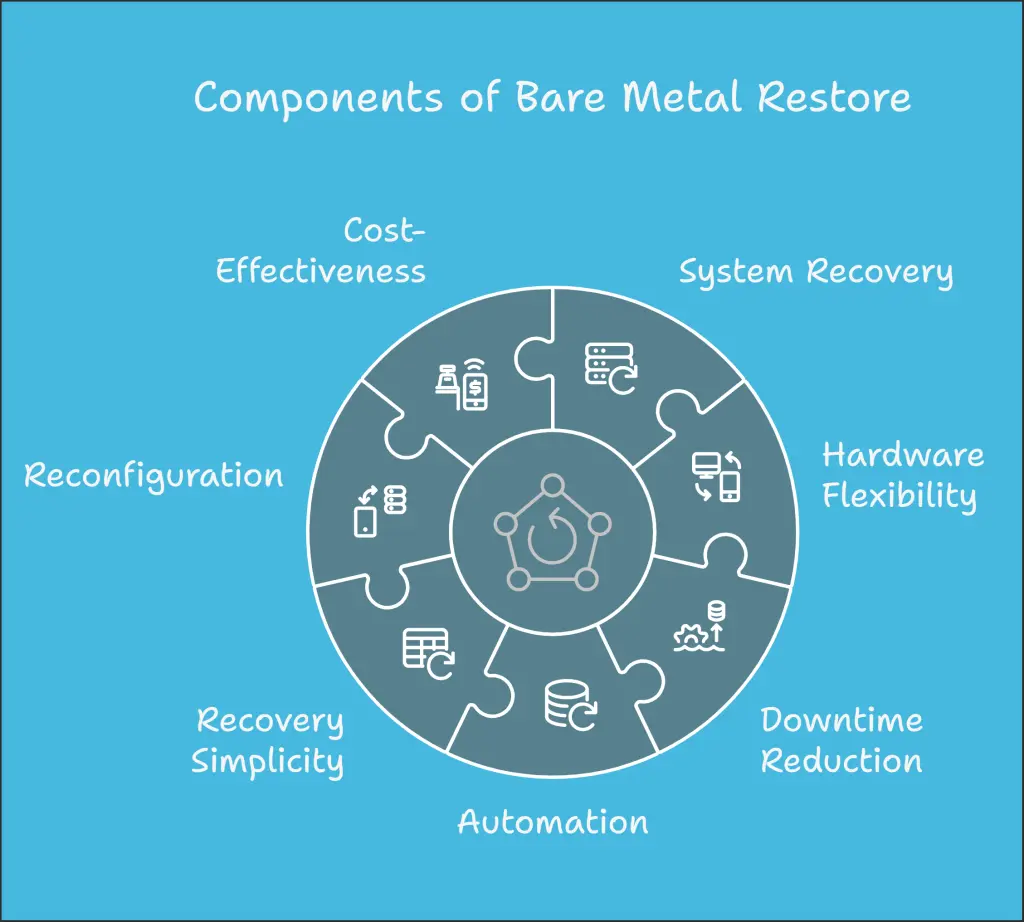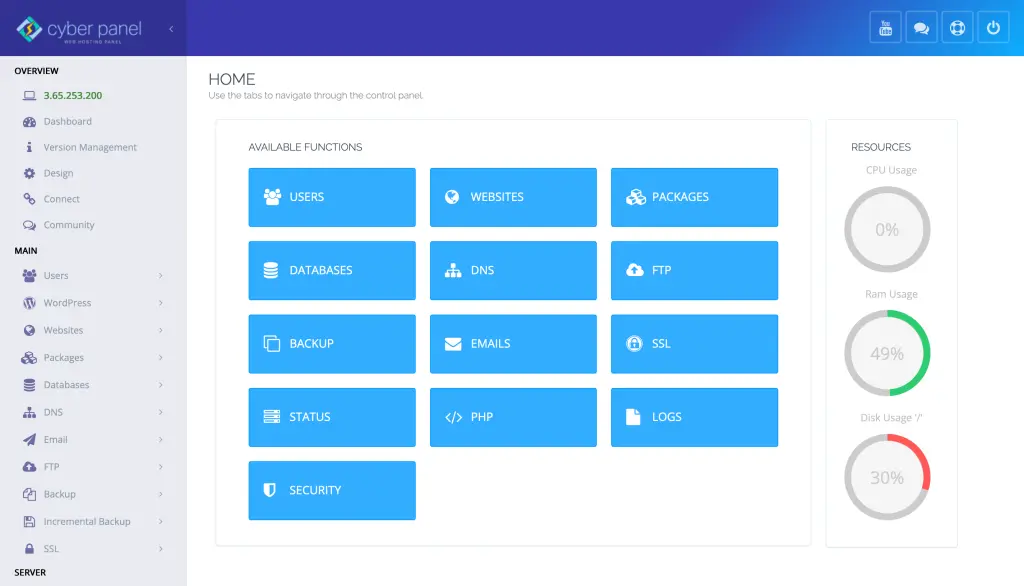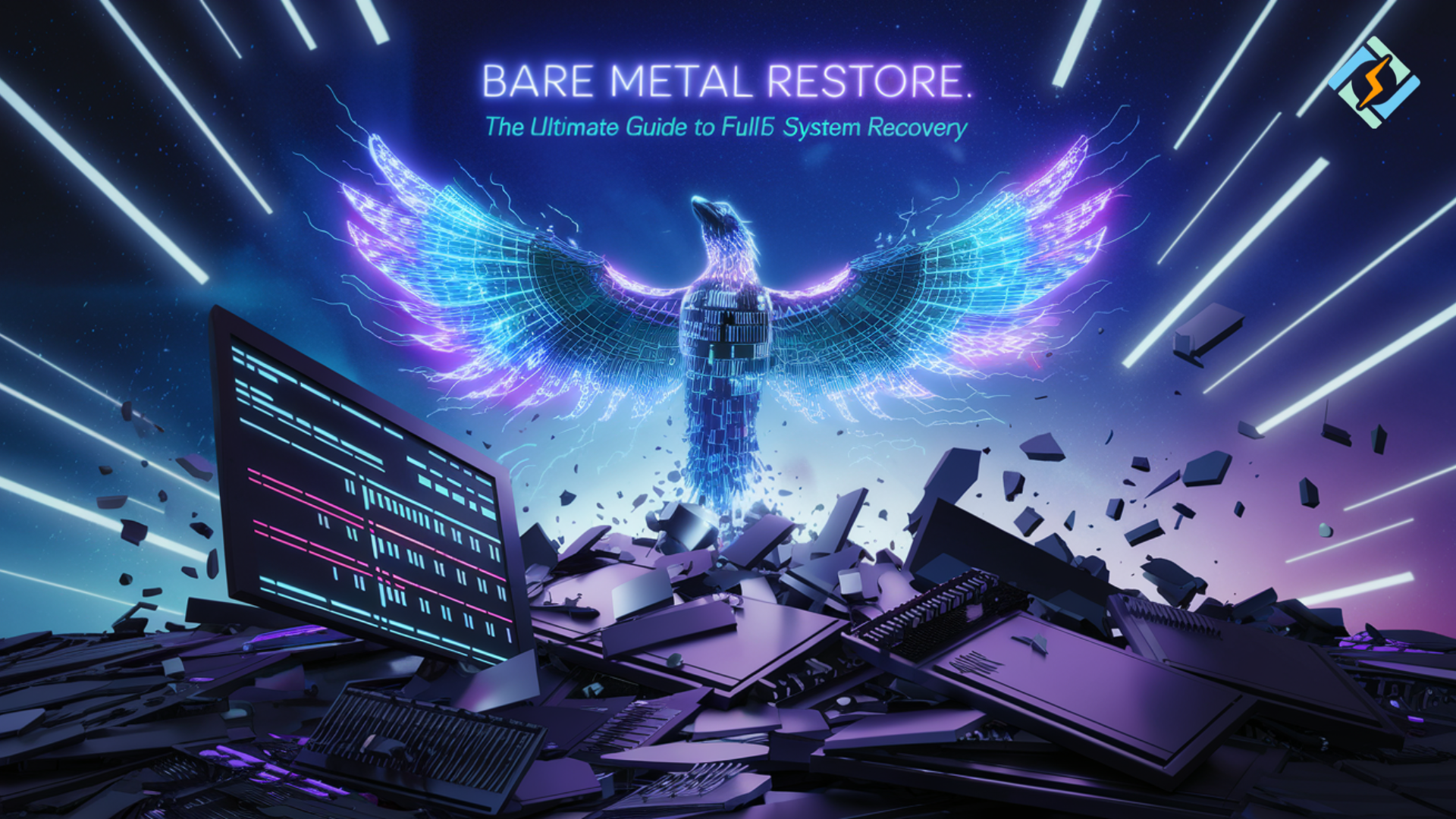Businesses need effective systems recovery methods when calamity strikes, and a loss of information happens. One such powerful solution is bare metal restore (BMR). It is the process of restoring your whole system from the ground up to new hardware, meaning that everything and anything can be recovered in case of disaster. So, what exactly is bare metal restore, and how does it contribute to sustaining business operations without interruptions?
Bare metal restore (BMR), backup, and disaster recovery strategy enables you to not just restore any data but the entire operating system, all applications, features, and settings to new or replaced machines. As it wipes out the daunting task of having to reinstall the computer’s operating system and needed software from scratch, it becomes an important tool for organizations.
Our primary focus will be the definition of bare metal restore, its procedure and key reasons why it is useful along with how implementing strategies is different from other backup methods. In addition to that, we’ll discuss CyberPanel’s contribution to bolstering bare metal restoration.
Bare Metal Restore Definition and Overview
Bare metal restore is the restoration process of putting an image backup on a bare metal server. It entails applying an image on hardware without any pre-configuration. The backup image should have the complete setup of the system, which includes the operating system, applications, device drivers, configuration settings, and user data. Unlike file-level recovery which is focuses on restoring single files or folders, bare metal recovery captures the entire system at once.
“Bare metal” indicates the physical server simply referred to as a workstation or server. It carries out the restoration of advanced server backup images. BMR aims to get a business functioning as fast as physically possible in the event of a server failure, cutting-over operations, or malware running unmitigated.
BMR’s best advantage is its speed in recovering a complete system image but excludes backing up a single document folder. When a system is allocated an image it is turned the windows os into a VM with the required software, admin privileges, drivers, applications, and all-needed configuration settings, thus removing any user need for interaction. So everything critical is accounted for, and the system functions and positions itself exactly like how it was as soon as the bacteria ate through the rest of it.
Get exclusive access to all things tech-savvy, and be the first to receive
the latest updates directly in your inbox.
What’s the Bare Metal Restore Process and How’s It Done?

The bare metal restoration process is divided into a number of critical steps which are detailed below:
Step 1: Backup Creation:
The first step in the bare metal restore process is creating a complete backup of the system. The backup should consist of an image capturing the operating system and all the relevant applications and data. The image can be created and stored using backup software on a network drive, external disk, or even on a cloud. This backup acts as a snapshot of the system at the time of creation.
Step 2: System Failure:
Whenever a failure happens, like during a hardware failure or a ransom attack, the system is no longer usable. In this scenario, it is important to have bare metal restore solutions in place. The backup image that was created previously is now ready to be used.
Step 3: Restoring the System:
For the bare metal restore, the initial step assumes that the backup image is already stored on new or freshly wiped hardware. This process is known as restoring. The method used to perform the restore process is recovery software capable of reading the backup image, having the data applied to the bare hardware, and restoring all information such as operating system, applications, settings, and data.
Step 4: System Recovery:
Once the restore process has finished, the system is operational with all software, applications, and configurations available. The company can continue its business activities with little to no downtime as if the system failure had never happened.
With the bare metal restoration process, downtime is achieved because a manual installation is not required; all system files, settings, and applications are restored automatically.

Advantage of BMR in Data Recovery
- The most significant characteristics are completing a system recovery in any provided reason and flexibility in hardware, as well as less downtime reduced automation, and simplicity in recovery procedure. These steps follow a logical flow that is more dynamic and reduces the need for human intervention, achieving much in less time. BMR allows a company to recover a system effectively, swiftly, and hands-free, with the use of automation.
- The system that had a backup image can be reconfigured and restored instead of formatting and reinstalling the system completely to save time. Prior to doing this, all applications, settings, and files from the image are uploaded and set to ensure effortless recovery without errors. The original setting is blanked in this process ensuring ease in handling any errors occurring not being reduced to a base level of the setup and wasting time.
- BMR allows a company to restore a primary system on a new computer or other compatible one unlike traditional methods allowing the restoration to only be done on the original machine. Because all standard hardware used is usually easy to find or capture within ranges that are not too priced or hard to reach, these methods promote Saucha in a safe and affordable manner.
The Role of CyberPanel in Bare Metal Restore

CyberPanel, a web hosting control panel, is a necessary component of any company that hosts websites or web-based applications. It also facilitates backup and recovery processes in disaster situations when combined with bare metal restore.
CyberPanel allows users to back up the entire server, including all websites, email accounts, databases, and server settings. Such backups can be used when new hardware needs to be installed after a system failure, enabling businesses to get their web environment up and running in record time.
Business users of CyberPanel can easily automate the server backup process, enabling them to configure regular automatic backups that guarantee the latest system snapshot is available during recovery. Thus leveraging CyberPanel backup functionality makes bare metal restores quicker and more effective, helping to reduce the recovery time objectives during system recovery.
FAQs: Bare Metal Restore
1. What files should not be copied to a backup?
Files with less importance such as base protocols, files of single users, Memoranda, and folders containing information that serve as contact points such as cells, emails, and messages that are accessible at any time such as Windows are examples of files regarded as having less importance. The name of the folder creation sets the criteria for what information should be included where it can serve as a measure of security and loss prevention unlike accessing the information without having to log in.
2. Is it possible to undertake Bare Metal Restore procedures on new hardware setups?
Indeed, it is possible to execute Bare Metal Restore operations on new or substitute hardware. The backup image executes a restore operation and places all the required files and configurations to make the system operational.
3. In what ways does Bare Metal Restore improve recovery from disasters?
This technology enables companies to restore systems in the shortest time possible, allowing business processes and operations to continue without interruption. It eliminates the requirement for expending effort in reinstallation and manual reconfiguration of applications and other system settings.
4. What is the length of time required for Bare Metal Restore?
The time required for Bare Metal Restore will be influenced by the size of the backup and the performance of the hardware. However, it is usually quicker than doing a complete reinstallation and setup of the software on the system, which typically takes a couple of hours.
5. Is Bare Metal Restore a viable option for a small company?
Indeed, Bare Metal Restore is very suitable for small businesses that require quick recovery. This feature works well towards minimizing system downtime and ensures that the systems are put back to their original state without the need for manual interventions.
Final Thoughts!
For companies that seek disaster recovery, Bare Metal Restore is the best tool. It guarantees that your complete system will be restored in the shortest period possible including the operating system, applications, and data.
Through CyberPanel, businesses can simplify the Bare Metal Restore method as well as automate backups and speed up the recovery process. Do not wait for data loss to enact preventative measures. Adopt a Bare Metal Restore solution today so that your systems are safe and restorable no matter the type of disaster face.
Have your company’s system issues taken the time to resolve? Check out CyberPanel’s backup and recovery functions to adjust your Bare Metal Restore approach and ensure your systems liaisons without errors.



